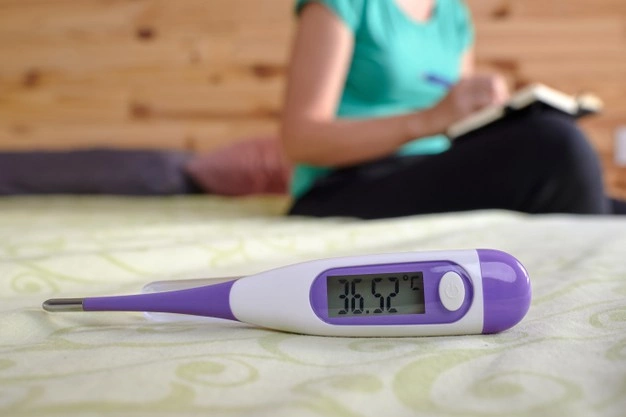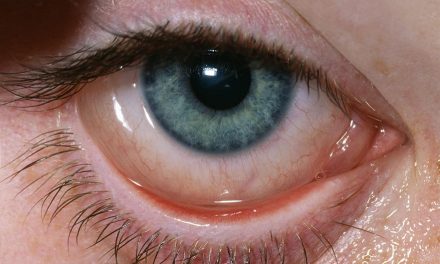The average body temperature in adults can vary depending on where it is taken, being oral, axillary, or rectal; however, the most common in adults is axillary, with values between 35.4ºC and 37.2ºC. On the other hand, the body temperature of the baby and the child is different from that of the adult, considering that it is normal for it to vary between 36 ºC and 37 ºC when taken in the armpit.
In adults, a fever is considered when the axillary temperature is above 38 ºC since temperatures between 37.5º and 38 ºC can be easily reached, especially when it is scalding or when the person has a lot of clothes on, for example.
What is average temperature, and how is it measured
The surest way to know if you have a fever is to use a thermometer to measure the temperature, not relying on the technique of placing your hand on the forehead or neck to know if the person is hot or not.
The high temperature can often be lowered naturally by removing an item of clothing or bathing in warm, almost cold water, for example. However, in cases where the temperature in the armpit is higher than 39ºC, it is recommended to seek medical attention since the use of medications may be necessary.
See the main ways to lower a fever.
How to measure temperature correctly.
To measure body temperature correctly, you must know how to use each type of thermometer. The most common are:
Digital thermometer: just put the metal tip in the armpit, anus, or the mouth, and it comes into contact with the skin or mucous membranes; wait at least 3 minutes or until the integrated alarm sounds to verify the temperature;
Glass thermometer: place the tip of the thermometer in the armpit, mouth, or anus, in direct contact with the skin or mucous membranes, wait between 3 to 5 minutes, and then check the temperature;
Infrared thermometer: point the front of the thermometer towards the person's forehead or into the ear canal and press the button. After the audible alert, the thermometer will display the temperature immediately.See how to use each type of thermometer.
Body temperature should be measured at rest and never immediately after having performed physical activity or after taking a bath, since in these cases, the body temperature may be higher, so the value may not be accurate.
The most common, practical, and safest thermometer to use is the digital thermometer since it manages to take a temperature reading under the armpit and produces an audible signal when it reaches body temperature. However, any digital thermometer is reliable as long as it is used correctly. The only type of thermometer that is contraindicated to use is mercury since it can cause poisoning if it breaks.
How to measure the temperature in the baby
The body temperature in the baby must be measured with a thermometer as in the adult; a convenient and fast thermometer, such as digital or infrared, should preferably be used.
The ideal place to evaluate the baby’s temperature more accurately is in the anus, and, in these cases, the digital thermometer with a flexible tip should be used so as not to injure the baby. However, if the parents do not feel comfortable, they may choose to measure the temperature by the armpit, confirming the anal temperature only when they go to the pediatrician.
For these losses, it has four basic mechanisms: Radiation, Conduction, Convection, and Evaporation.
—Radiation is the heat that is emitted by the body in the form of infrared radiation. If the ambient temperature is higher than the body temperature, the body will not lose heat by radiation but gain it since the bodies surrounding it also emit it.
—The conduction of heat occurs between two bodies in direct contact, and, in the case of man, most of the heat is conducted by the air that surrounds his body. However, if it does not move, it quickly acquires body temperature, and no more heat is lost in this way. If there is a current of air, this renewal of the air, called convection, brings in “new” air, with the ability to drive, and the driving mechanism becomes efficient again.
—Evaporation is the transformation of water into steam, and it is the only one that works at ambient temperatures above 37 ° C, as long as the air is not saturated with water vapor. A fan does not lower the ambient temperature but increases convection and helps evaporation, allowing more heat loss through the subject’s body.
When the environmental temperature is higher than the skin temperature, the gradient or difference between the temperatures is negative, so the body tends to gain heat. In this case, the only means used to lose heat is the evaporation of sweat. TheSweating is very important to keep the temperature constant during high-temperature exercise, but a high sweating rate can have negative consequences.
In the first place, the sweating rate can reach up to 2 l / h, which is related to a significant loss of water and the consequent dehydration, which will lead to an increase in blood viscosity, causing a decrease in stroke volume. . Another consequence of a high sweat rate for prolonged periods may be a decrease in urine production.
During excessive sweating, alterations in kidney function are observed, detecting a decrease in glomerular filtration and an increase in the reabsorption of water and sodium. All these processes are put into operation in response to the decrease in plasma volume induced by the high sweat rate.





